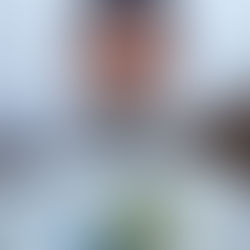The Picture Book Buzz - Nomad Press Picture Book Science Series
- Maria Marshall
- Apr 27, 2018
- 3 min read
Finding interesting and interactive ways to introduce early readers to nature and science is a one of my goals. There are so many fascinating and bizarre animals, awe inspiring natural places, and amazing science that surrounds us daily. I enjoy discovering fun and informative picture books that share these wonders with younger readers.
Andi Diehn and Nomad Press have created a nonfiction, picture book series that takes the larger themes of energy, forces, matter, and waves and brings them down to examples kids can relate to. For instance: food giving them energy, gravity causing them to fall, matter taking up space, and the wave of a slinky. They are intended to "satisfy the curiosity" of "children who love to ask, 'WHY?' about the world around them" and encourage further investigation and inquiry.

Waves, Energy, Matter, & Forces
Author: Andi Diehn
Illustrator: Shululu
Publisher: Nomad Press (2018)
Ages: 5-8
Nonfiction
These are big topics to tackle and explain in a way young kids, 5-8 years old, can understand. Andi Diehn accomplishes this task fairly well. Each book includes at least one "try this," STEM section (featuring a fun, kid-friendly experiment) and a glossary.
Shululu's lively, textured illustrations feature an ethnically and ability diverse cast of cheery characters mostly experiencing and enjoying the outdoors.

Waves:
This was my favorite. Perhaps this is an easier topic to condense, but there are fewer tangents in this book. Beginning with a physical hand wave - something very familiar to a child - the book explores waves in the water, air/wind, light, sound, and ultimately the earth (i.e. quakes) without condescending or being too obscure. For example - "Sound moves in waves, too. . . When the waves reach your ears, you can hear the sounds." Additionally, the "try it" experiments with water in a sink and a slinky are fun. It is a good place to begin the conversation and hopefully spark interest in further exploring different waves.
Image © Shululu, 2018, text © copyright Andi Diehn, 2018.

Energy:
The initial comparison of the energy (or "food and rest") needs of a child versus a plant (crashing in a nap or wilting, as evidence of both needing more energy), extends for the first half of the book. Culminating in the statement that "just like food and rest give you energy, water and sunlight give energy to trees and flowers and grass." Then the book quickly discusses chemical, movement, light, electrical, and heat energy. This is a big topic to break into 27 pages. But it is a good starting point, with fun ball motion and heat-energy "try-it" experiments.
Image © Shululu, 2018, text © copyright Andi Diehn, 2018.
Forces:

After beginning with a good explanation that "when you force something, [a stuck door] you make it do what you want it to do," the book segues into talking about being forced to clean your room or eat dinner. Which feels like a break from the evaluation of the "physical science" of force, but it quickly gets back to talking about the effects of gravity, magnetism, pushing & pulling forces, and friction. Using tug-a-war and swings as the basis for the push and pull of forces, brings the topic down to a kid's everyday level. While adding a humorous elephant into the mix. The illustration of everything floating around in the "No Gravity National Laboratory" is cute and the "try-it" experiment is a fun one involving magnets.

Matter:
Unfortunately, this one begins by evaluating the question of one child to another of - "What's the matter?", feeling better, and comments of "It doesn't matter." When it finally addresses the physical science, it defines matter as "anything that takes up space and can be weighed." The discussion includes the many differences shapes and sizes of matter, including air, solids, liquids, gases, and lightning. Then Diehn evaluates what is NOT matter. Namely sound, rainbows, light, and heat. The experiments include using balloons to prove air has matter and listing five solids, liquids, and gases. It even includes a groan worthy joke for science buffs.
Image © Shululu, 2018, text © copyright Andi Diehn, 2018.
Overall, I think these books do a reasonably good job of introducing these big topics to younger kids. Many of the examples or illustrations bring the physics down to the kid's everyday level. And the experiments are sure to spark questions and hopefully an interest in finding out more about these topics and other ways to explore them.























Comments